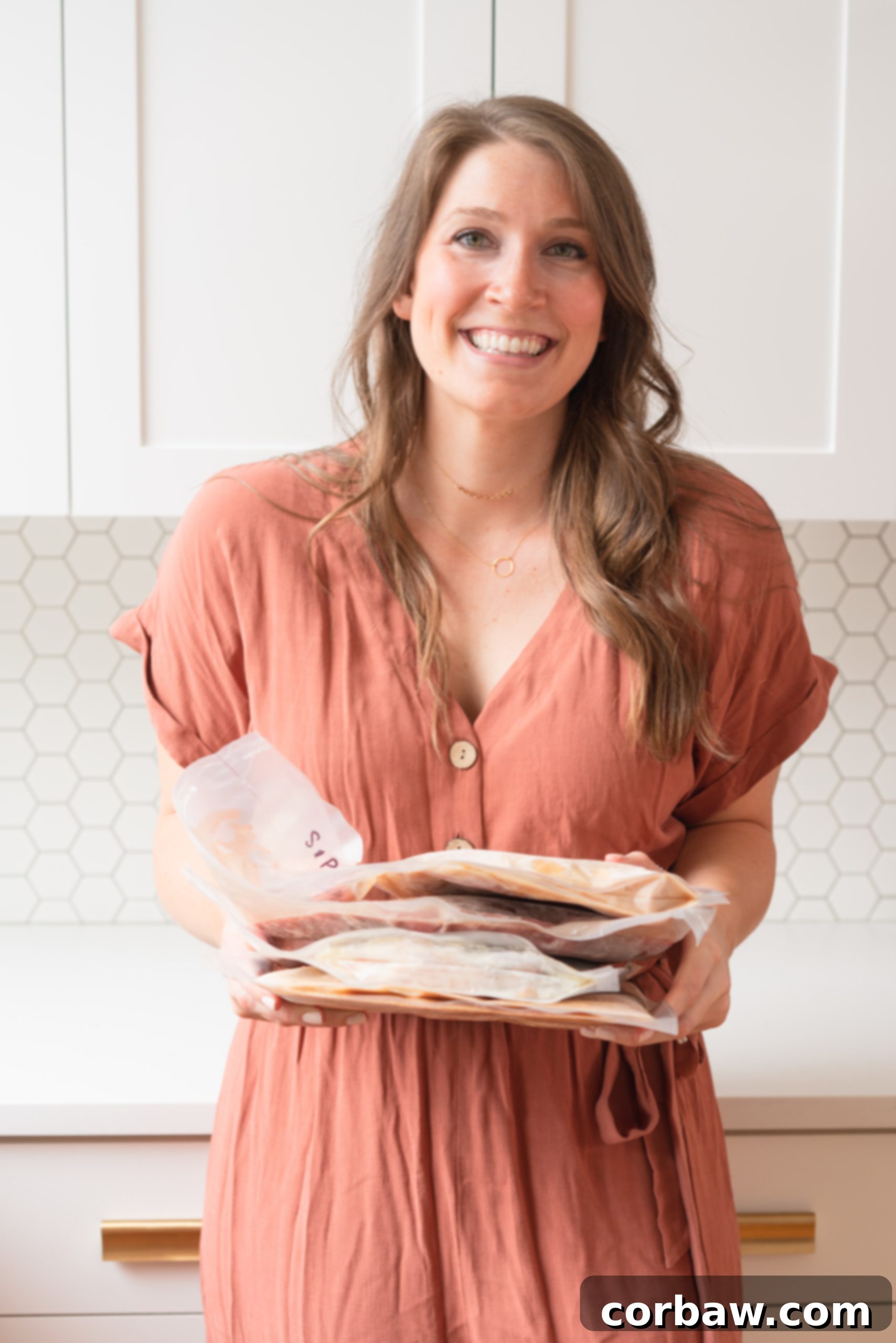Mastering Sous Vide Meal Prep: Effortless Freezer Stocking & Weekly Culinary Excellence
Incorporating sous vide into your meal preparation routine is an absolute game-changer, transforming the way you approach cooking and saving you valuable time. My preferred strategy centers around stocking your freezer with proteins that are pre-seasoned and ready to go straight from frozen into the water bath, completely eliminating the need for thawing. At the start of each week, dedicate a little time to sous vide a variety of staple proteins that can then be effortlessly incorporated into diverse meals throughout the coming days. This method guarantees perfectly cooked results every single time, making healthy and delicious eating consistently achievable.
The beauty of sous vide lies in its precision and ability to deliver consistently tender and juicy results. By cooking your proteins in a temperature-controlled water bath, you remove the guesswork, ensuring that your food is never over or undercooked. This consistent quality is invaluable for meal prep, as it means every meal you assemble will taste as good as the first. Beyond just perfect cooking, sous vide simplifies the process. Once your food is sealed and in the bath, it requires minimal supervision, freeing you up to focus on other tasks or simply relax. This makes it an ideal technique for busy individuals and families looking to streamline their kitchen routine.
Stocking Your Freezer for Seamless Sous Vide Meals
Maintaining a well-stocked freezer with ready-to-sous-vide proteins is the cornerstone of efficient meal prep. Here’s my favorite, highly effective strategy to ensure you always have delicious, perfectly prepped ingredients on hand:
- Buy in bulk when proteins are on sale: This is arguably the most impactful step for both convenience and cost savings. Keep an eye out for sales at your local grocery store, or even better, explore bulk wholesale clubs like Costco or Sam’s Club. These stores often offer significant discounts on larger cuts or packages of meat, chicken, and fish. When you find a good deal, don’t hesitate to stock up! Consider various cuts – chicken breasts, thighs, pork chops, steak cuts like sirloin or chuck, and even fish fillets can all be excellent candidates for sous vide. Buying in bulk not only reduces your per-pound cost but also ensures you have a steady supply, minimizing last-minute grocery runs.
- Portion and season your protein for your family’s size, choosing 2-3 distinct flavor profiles: Once you have your bulk proteins, the next step is to portion them out according to your typical meal sizes. This ensures you only cook what you need, reducing waste. For a single person, this might mean individual chicken breasts; for a family, perhaps two or three pork chops per bag. The real magic happens with seasoning. Instead of leaving them plain, prepare different batches with various rubs, marinades, or sauces. This foresight guarantees a diverse range of meals throughout the week without feeling like you’re eating the same thing repeatedly. My cookbook Sous Vide Meal Prep is packed with tons of creative rub, marinade, and sauce recipes, but you can also find many fantastic ideas right here on my website. For instance, if you purchased a large pack of pork chops on sale, you could prepare half with a classic apple and herb seasoning for delicious sous vide pork chops and apples, and the other half with a zesty Chipotle Mustard Marinade. This variety keeps your meals exciting and prevents palate fatigue, making your meal prep efforts much more sustainable.
- Vacuum seal the portioned and seasoned protein: This step is critical for preserving quality and enabling the freezer-to-bath method. Using a dedicated vacuum sealer along with high-quality vacuum seal bags is the most effective way to remove air and prevent dreaded freezer burn, which can compromise the taste and texture of your food. Eliminating air from the packaging creates an anaerobic environment, which is ideal for sous vide cooking as it ensures even heat transfer and inhibits bacterial growth during extended cooks. While vacuum sealing is highly recommended for optimal results, I also provide other effective air removal methods on my website if you don’t have a vacuum sealer or prefer alternatives like the water displacement method.
- Fill your freezer and label everything: Once your proteins are perfectly portioned, seasoned, and vacuum-sealed, organize them efficiently in your freezer. Don’t forget to label each bag clearly with the type of protein, the seasoning used, and the date it was prepared. This simple step makes it incredibly easy to grab exactly what you need when you’re ready to cook, avoiding the mystery meat dilemma. Proper labeling also helps you track inventory and ensure you’re consuming food within its optimal freshness window.
When you’re ready to enjoy one of these delicious, perfectly prepped meals, simply take the vacuum-sealed bag straight from the freezer and place it directly into your sous vide water bath. No need for any prior defrosting! The sous vide circulator will gently bring the food to temperature, cooking it to perfection from its frozen state. It’s truly an effortless and convenient way to enjoy gourmet-quality meals on demand.
Sous Vide Meal Prep
This comprehensive cookbook outlines my entire proven method for efficiently keeping your freezer stocked with a diverse array of ready-to-sous-vide meals. Beyond just the stocking strategy, it also includes a fantastic collection of creative and delicious recipes to inspire your culinary adventures!
Weekly Meal Prep with Sous Vide: Maximizing Efficiency & Flavor
Leveraging the freezer stocking method described above will profoundly simplify and accelerate your weekly meal prep routine. Imagine the ease of simply selecting a few pre-seasoned proteins directly from your freezer, knowing they are already perfectly prepared for sous vide cooking. You have two main approaches for integrating these into your week: either sous vide them on the very day you plan to eat them for ultimate freshness, or you can opt to sous vide several proteins in advance on a dedicated meal prep day. The latter is particularly advantageous for those with demanding schedules, such as working outside the home, as it eliminates the need to wait 2+ hours for cooking once you return. With batch-cooked proteins, you just need to quickly reheat and, if desired, sear for texture before serving.
Versatile Sous Vide Proteins for Every Meal
One of my absolute favorite proteins to sous vide for weekly prep is chicken breasts. They are incredibly versatile and can be transformed into countless delicious meals for lunches throughout the week. Once cooked to tender perfection via sous vide, you can dice them and add them to a bowl with creamy ranch dressing, finely chopped spinach, crispy bacon bits, and shredded mozzarella for a unique and satisfying chicken salad sandwich filling. This mixture is fantastic served hot or cold, in a sandwich, wrap, or even scooped onto lettuce leaves for a low-carb option. Beyond sandwiches, this chicken is the ideal protein boost for a vibrant rice bowl, alongside your favorite grains and vegetables, or as the star in chicken tacos, quesadillas, or a quick stir-fry.
For effortless breakfasts, sous vide offers fantastic make-ahead options that will ensure you never skip the most important meal of the day. I highly recommend preparing a batch of sous vide hard-boiled eggs (or soft-boiled, depending on your preference for runny yolks). These can be peeled and kept in the fridge for quick snacks or added to salads. Another excellent choice is sous vide egg bites, which are essentially mini frittatas cooked in individual portions – perfect for a grab-and-go breakfast. You can customize them with various fillings like cheese, veggies, or cooked sausage. For a sweeter start, try sous vide oatmeal pudding (a recipe you’ll find in my Sous Vide Meal Prep cookbook). Prepare enough servings of these breakfast staples for the entire week, and you’ll eliminate the morning rush, starting each day with a delicious and nutritious meal without any fuss or second thoughts about what to eat.
Beyond chicken and eggs, consider preparing other dinner-friendly proteins in advance. Sous vide pork tenderloin can be sliced and served with roasted vegetables. Beef roasts can be cooked and thinly sliced for sandwiches or salads. Even fish like salmon can be sous vide for quick weeknight meals. The key is to think about how you can repurpose these perfectly cooked proteins into multiple different dishes, maximizing your effort and minimizing cooking time during busy evenings.
Common Questions About Sous Vide Meal Prep
No worries at all! This is a very common scenario, and sous vide meal prep is perfectly suited to address it. The easiest and most recommended solution is to cook several proteins in advance on a dedicated meal prep day, perhaps over the weekend. Once cooked, chill them rapidly in an ice bath, then store them in the refrigerator. When you’re ready to eat during the week, simply reheat them gently in a warm sous vide bath (just until warmed through), then sear them quickly (if necessary, for items like steak or chicken) to achieve that delicious crust before serving. This drastically cuts down on active cooking time on busy weeknights. If you’re feeling a bit more adventurous and have a WiFi-enabled immersion circulator, you can set up your sous vide bath as an ice bath before you leave for work, add your pre-sealed food, and then remotely turn it on from your phone a few hours before you get home. This allows the food to cook while you’re away. Be cautious, though: this method requires careful planning to ensure food safety, making sure the food doesn’t stay in the “danger zone” for too long before cooking begins.
When it comes to immersion circulators, quality and reliability are key. The Breville Joule is consistently my top recommendation. It’s renowned for its sleek design, powerful performance, precise temperature control, and excellent app integration, which makes remote cooking incredibly easy. However, if you’re just starting out or looking for a more budget-friendly option, the Anova Nano is a fantastic, affordable starter choice. It offers great accuracy and ease of use, making it perfect for beginners. Ultimately, any circulator from a reputable brand with strong positive reviews will likely do the trick and help you achieve excellent sous vide results.
While the immersion circulator is the heart of your sous vide setup, a few other essential tools will greatly enhance your meal prep efficiency. I highly recommend investing in a vacuum sealer and accompanying vacuum seal bags. This allows you to fully capitalize on the freezer method, enabling you to batch prep substantial quantities of food, freeze it without any concern for freezer burn, and then transfer it directly into your sous vide water bath when needed. A large, heat-safe container or a dedicated sous vide water bath is also crucial. While you can use any large pot, a specialized container with a lid can help maintain temperature more efficiently and reduce water evaporation over longer cooking times. Additionally, having heat-safe bags (whether vacuum sealer bags or Ziploc freezer bags for the water displacement method) is non-negotiable for safe and effective sous vide cooking.
Reheating sous vide egg bites is wonderfully simple, making them perfect for quick breakfasts or snacks. My preferred method is using the microwave. I simply remove the lid from their container (if applicable) and pop them in the microwave at 70% power for approximately 1 minute and 30 seconds. This gentle reheating ensures they warm through without drying out or becoming rubbery, retaining their perfectly fluffy texture. Adjust timing slightly based on your microwave’s power and the number of egg bites you’re reheating.
Tips and Tricks for Sous Vide Success
Looking for some extra guidance and resources to become a sous vide meal prep master? Make sure to explore these invaluable articles and guides to deepen your knowledge and refine your technique.
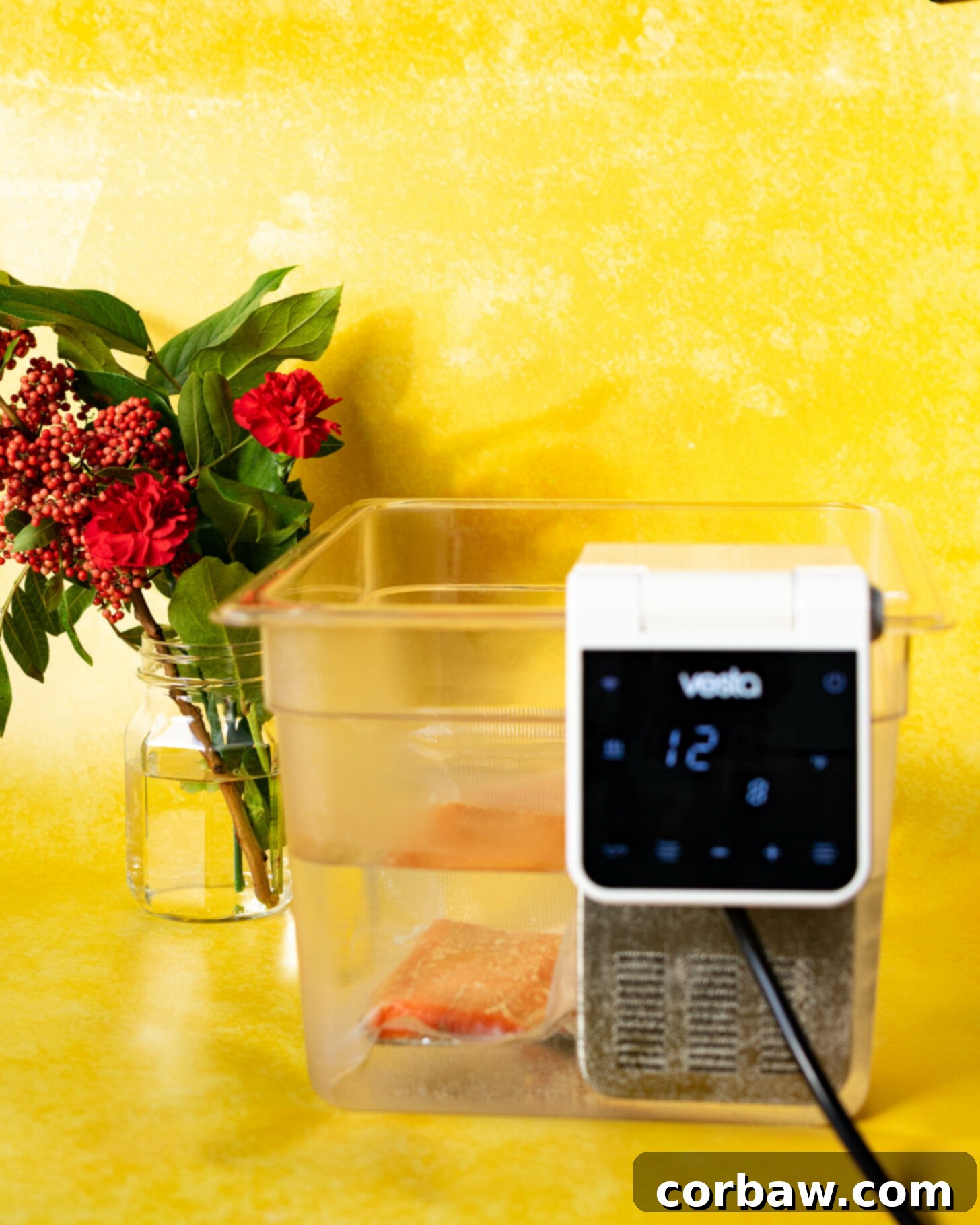
What is Sous Vide? A Beginner’s Guide. – A Duck’s Oven
Read More
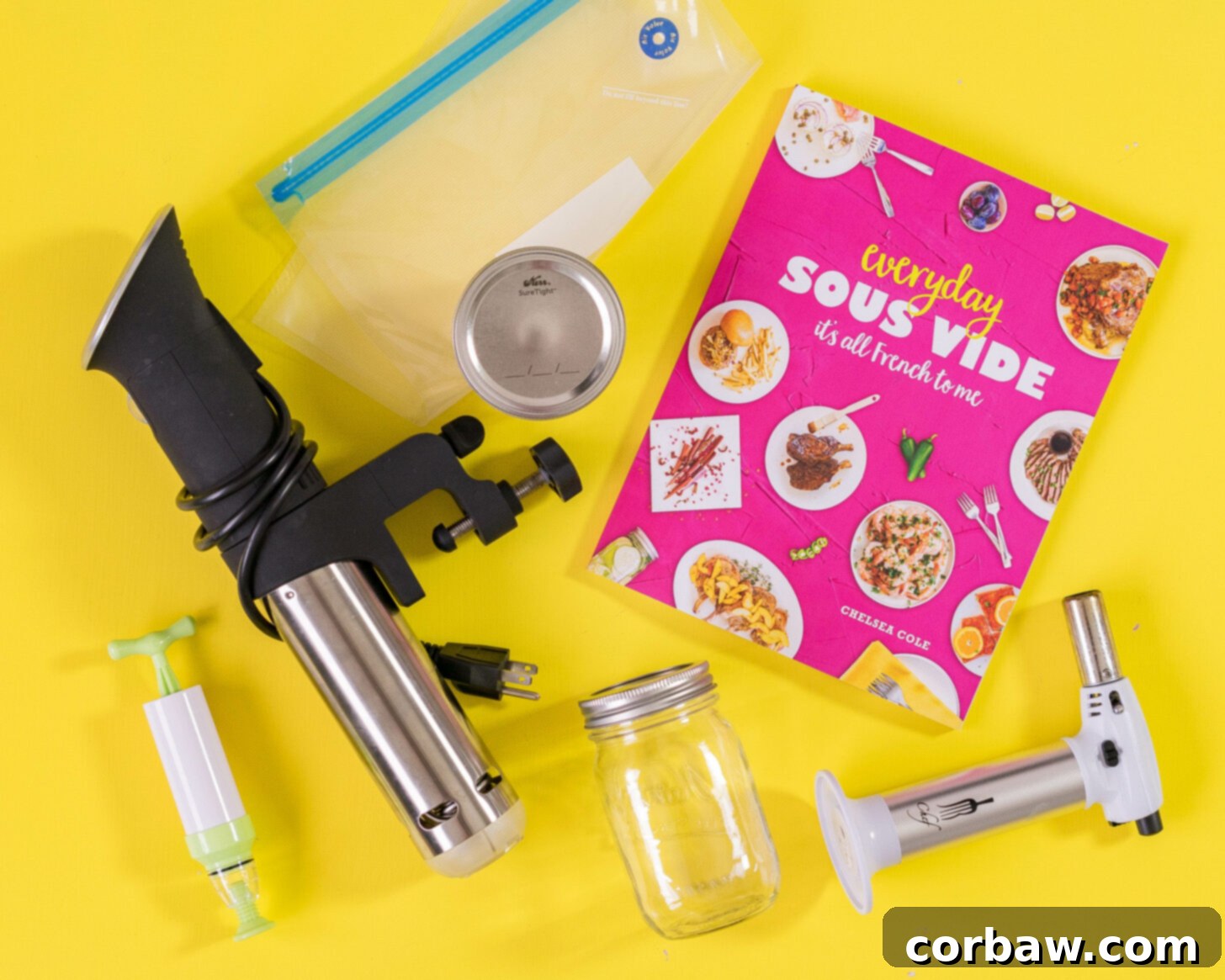
My Favorite Sous Vide Tools and Accessories – A Duck’s Oven
Read More
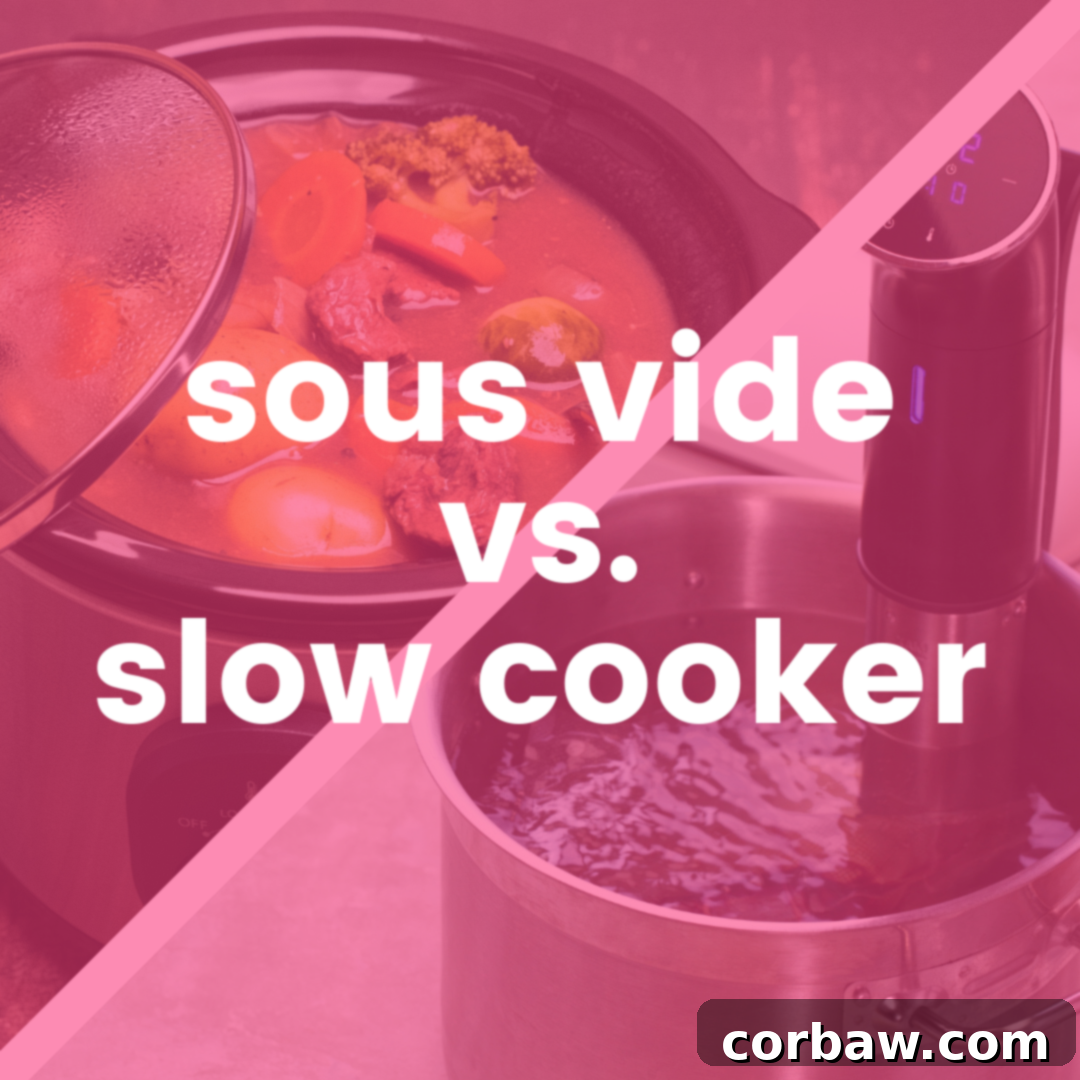
Sous Vide vs. Slow Cooker: Which is Better? – A Duck’s Oven
Read More

Sous Vide Air Removal Methods – A Duck’s Oven
Read More
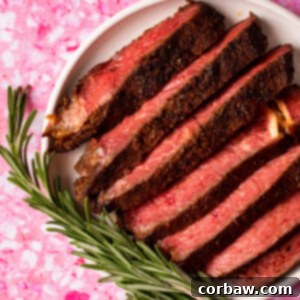
How to Get a Great Sear on Sous Vide Steak
Read More
You can also view this comprehensive guide as a dynamic step-by-step web story here.
